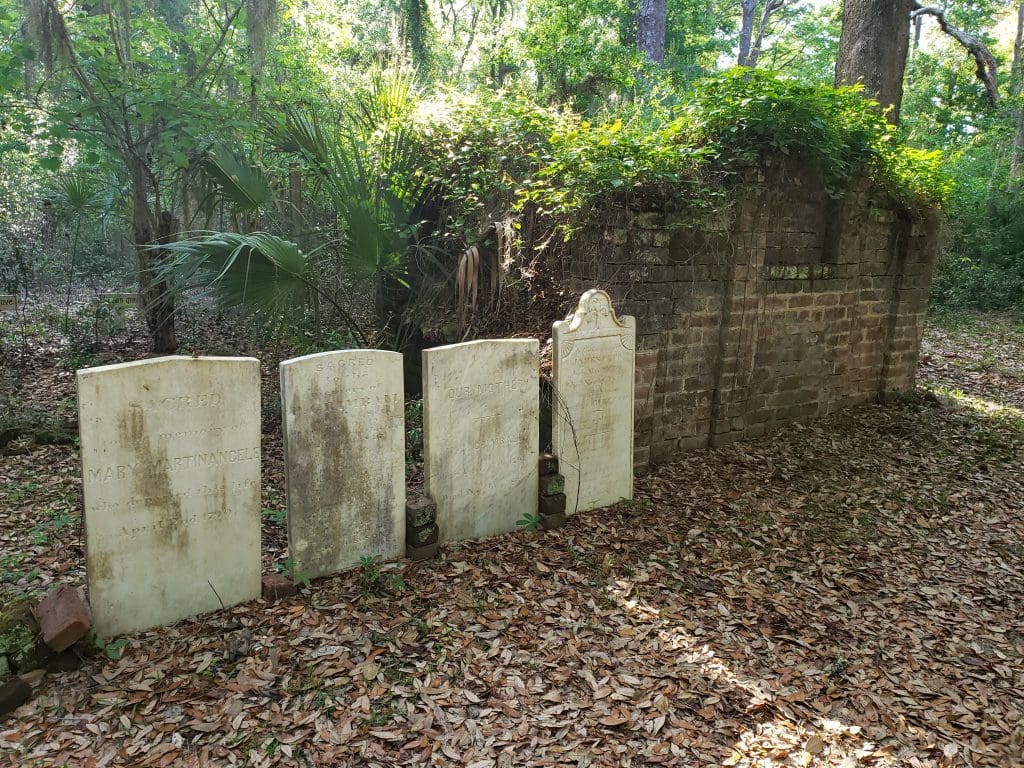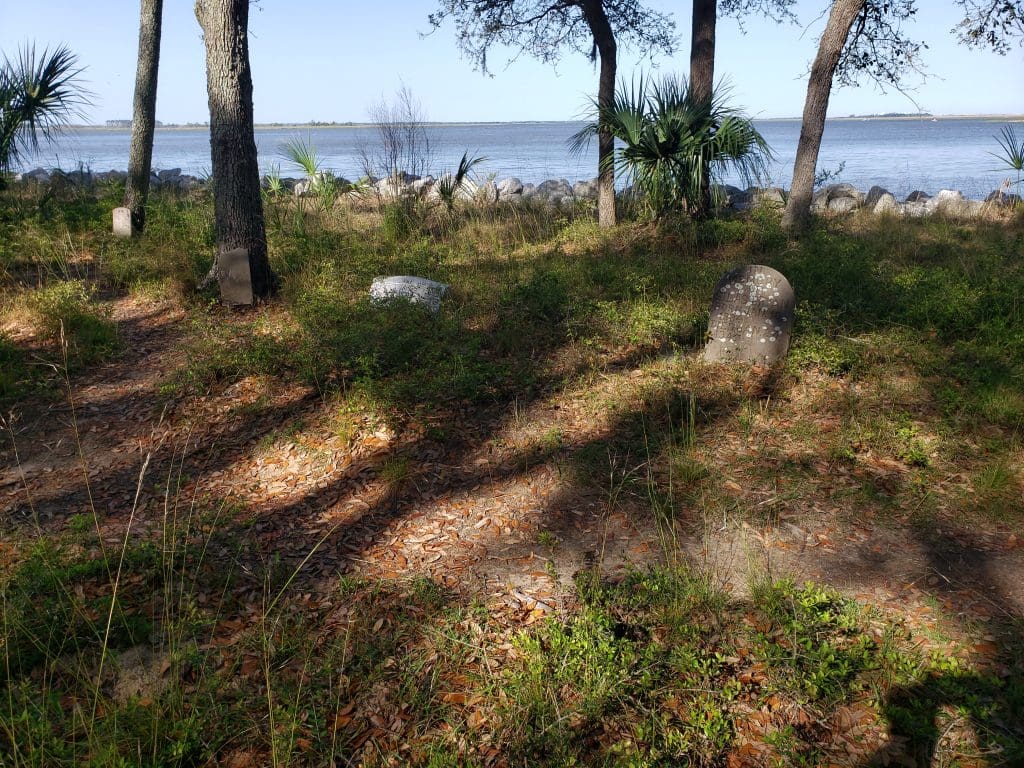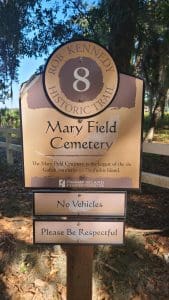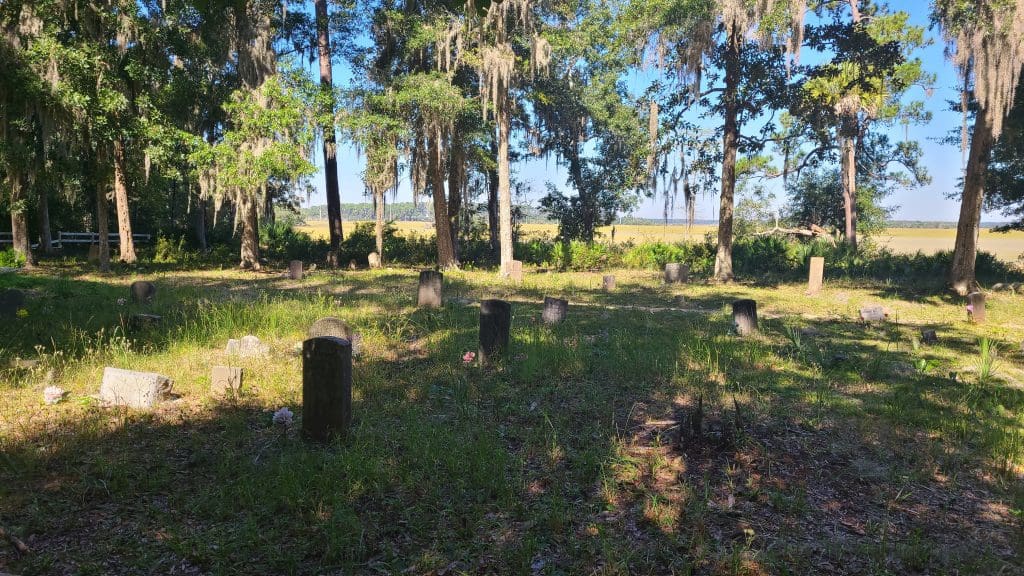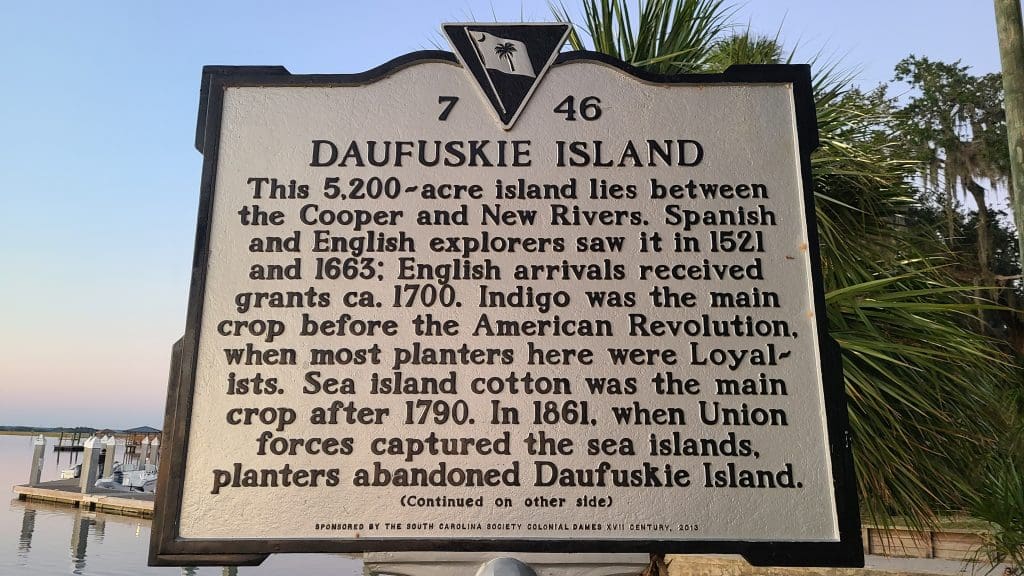
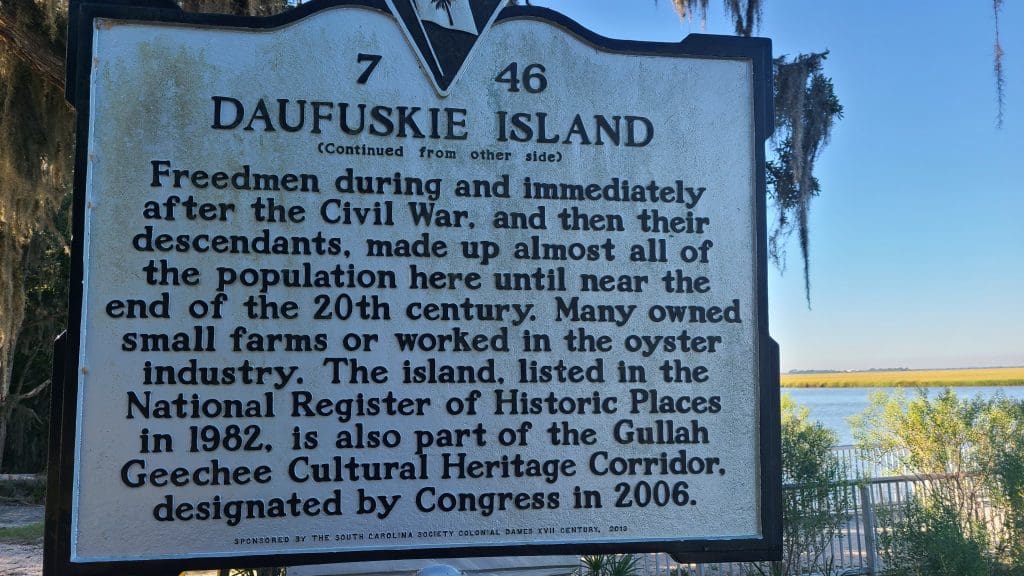
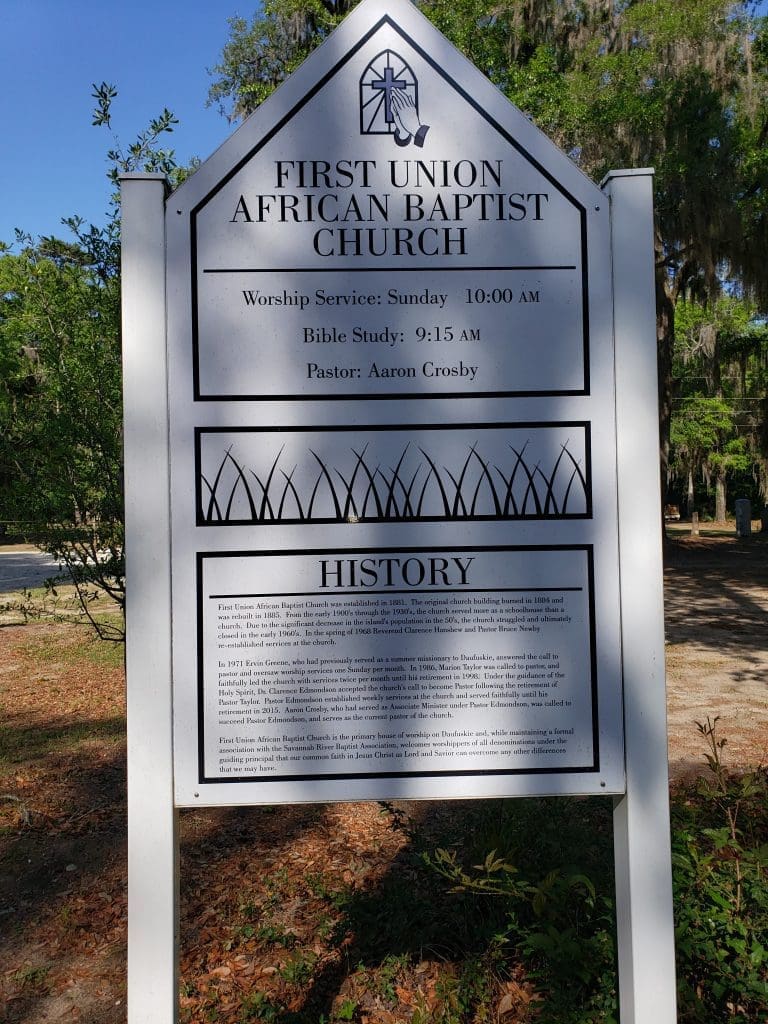
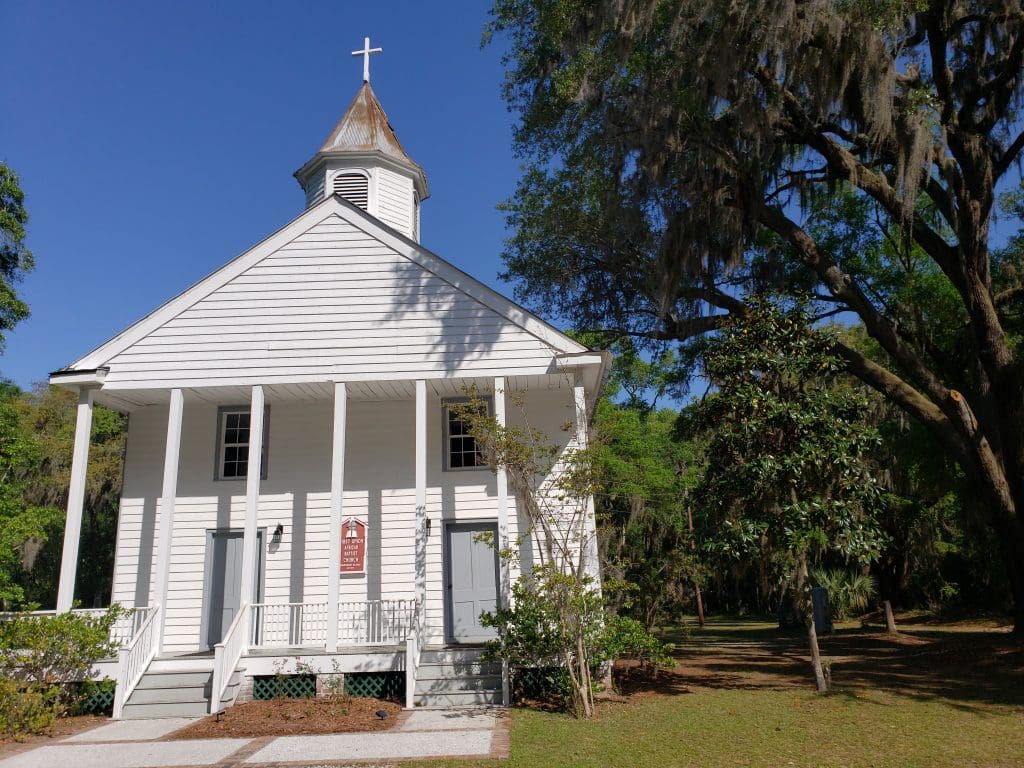
Daufuskie has a rich and varied past, from pre-Columbian native Americans to rice and indigo plantations to a post-civil war Gullah community of over two thousand souls with strong roots in Africa. The First Union African Baptist Church on School Road still has an active congregation today.
Maryfield School, where Pat Conroy was the first white teacher in 1970, was the basis for his first novel The Water is Wide and the movie Conrack.
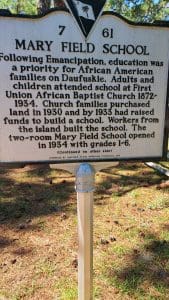
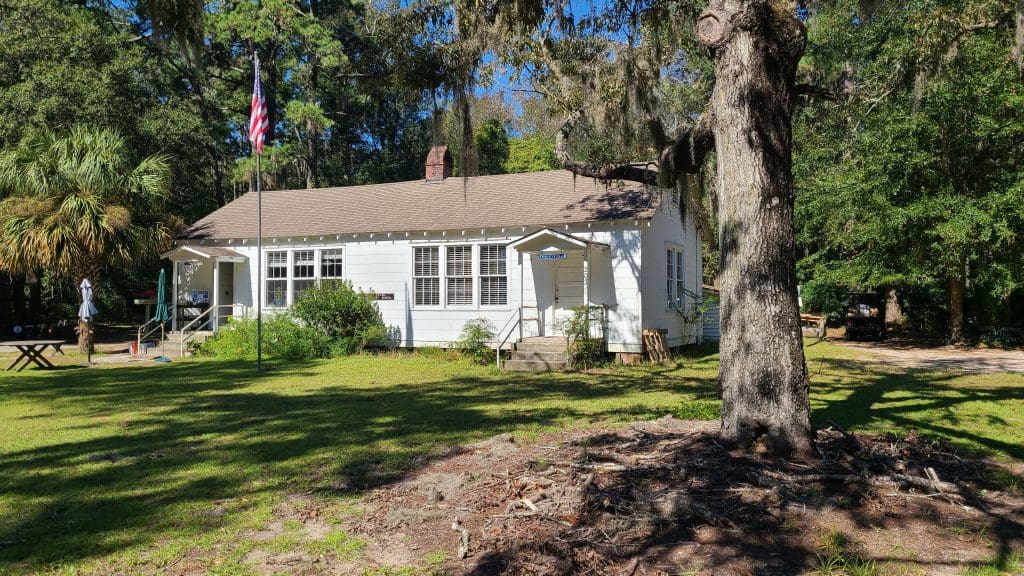
The Billie Burn Museum, located in the former Mount Carmel Church on Old Haig Point Road holds a wealth of artifacts and information that provide insights into life on Daufuskie in days gone by.
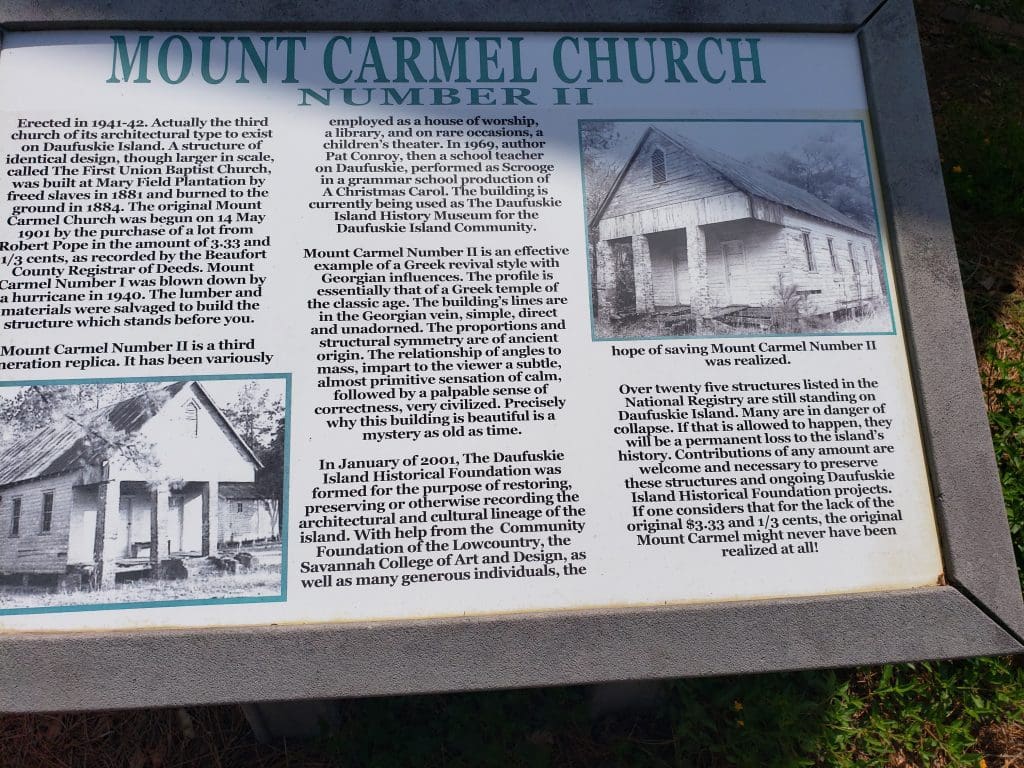
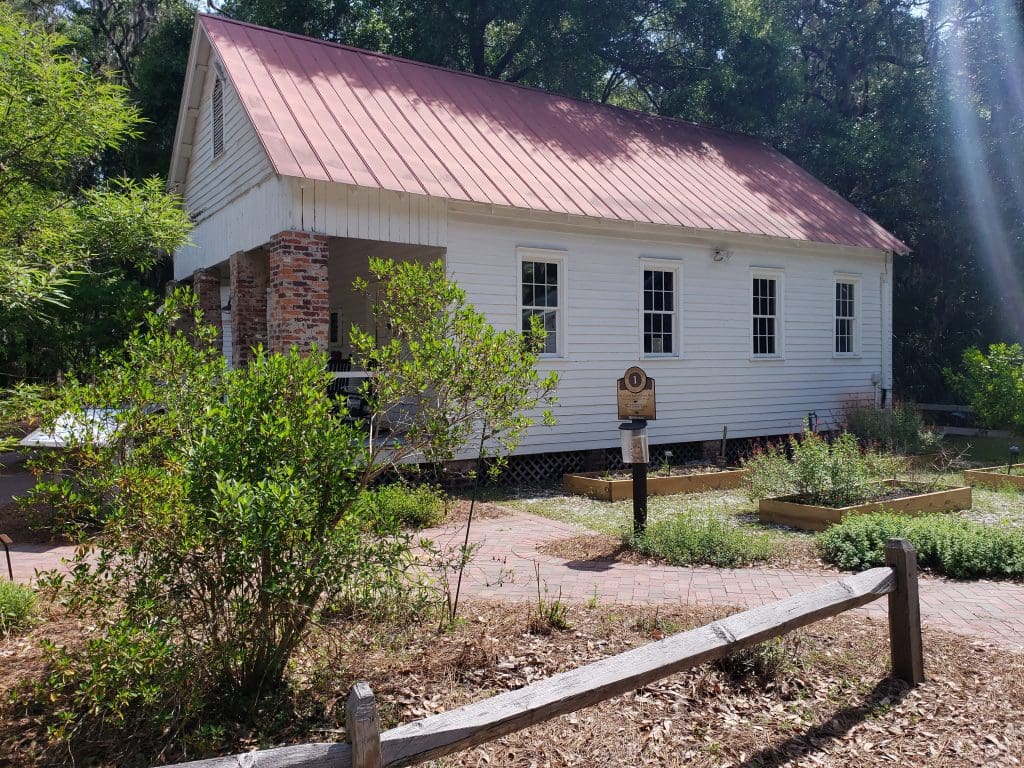
The Bloody Point Light House and Museum at the corner of Beach Road and Pappy's Landing used to be located several hundred yards off Bloody Point, and would be under water if it hadn't been moved inland years ago. The lighthouse and its former back light now house a museum, gift shop, and the Silver Dew Winery. You can drive your Mungeon Creek golf cart to the site, and then take a walking tour through the vineyard, which has interpretive signs describing days gone by.

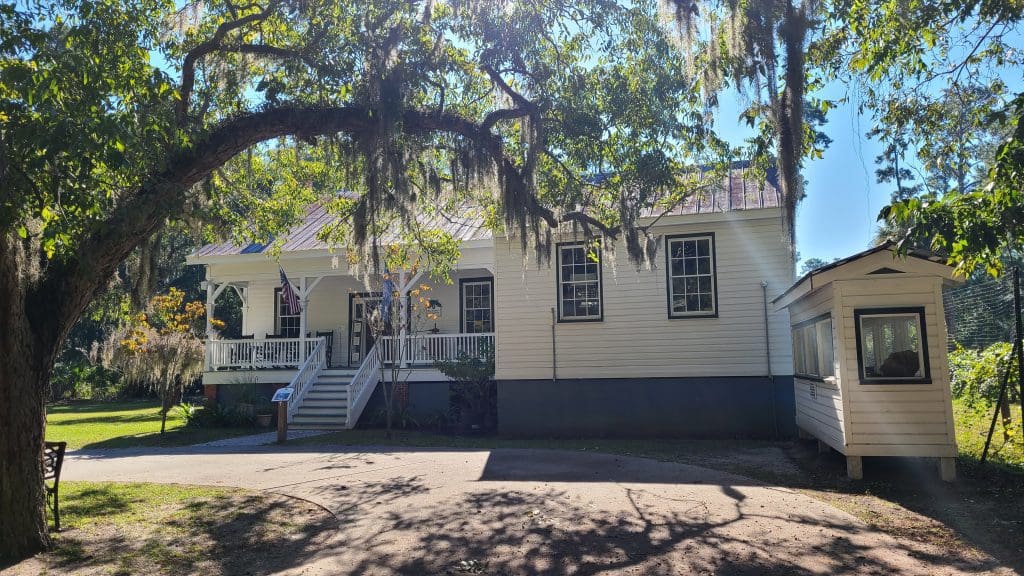
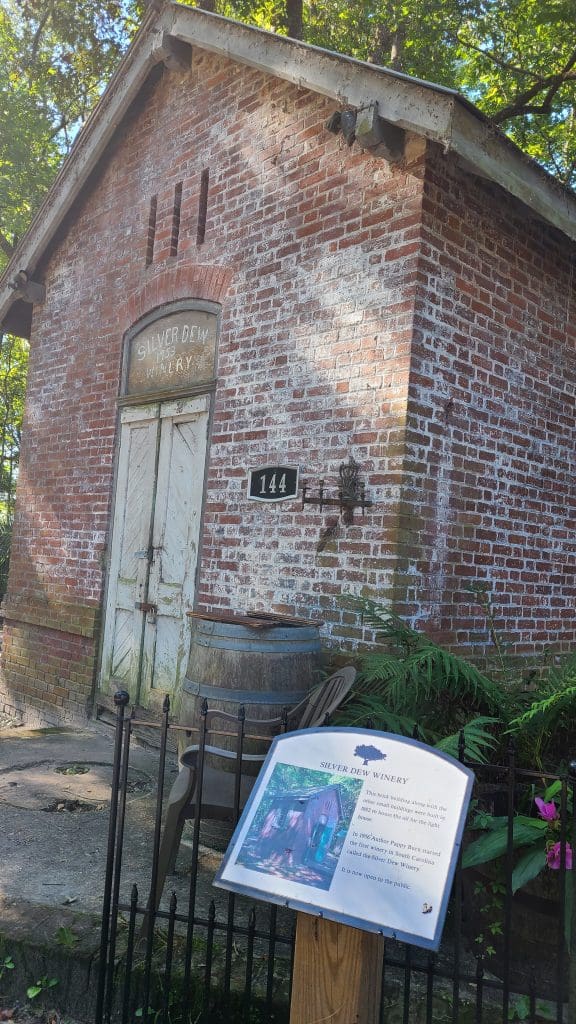
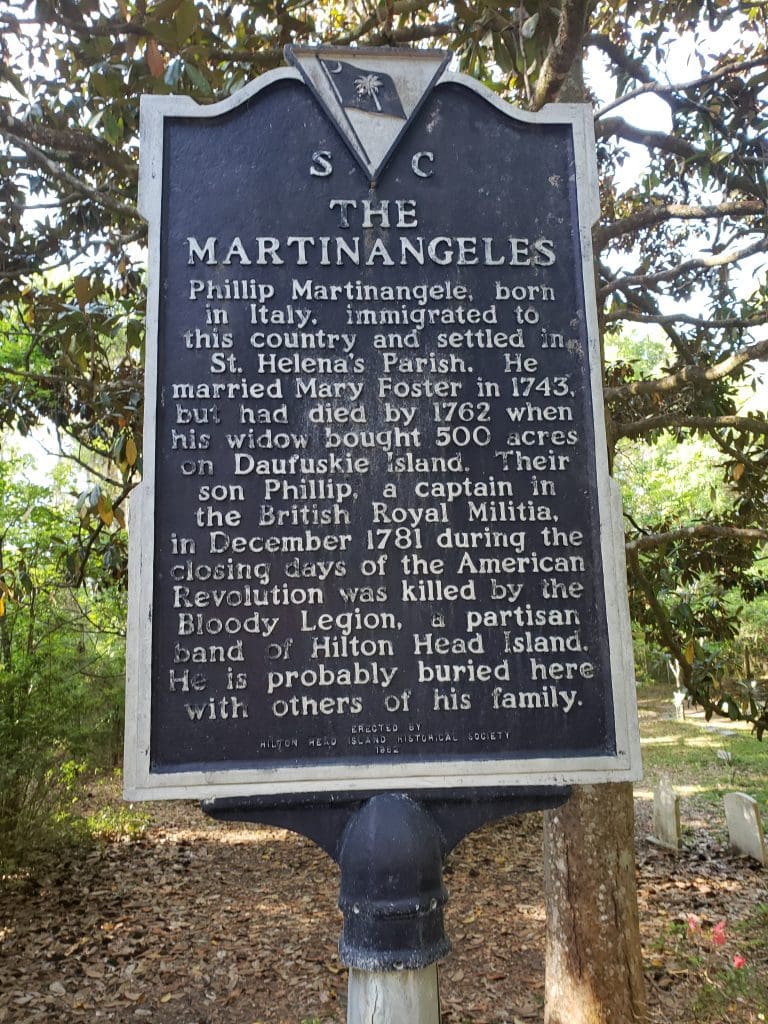
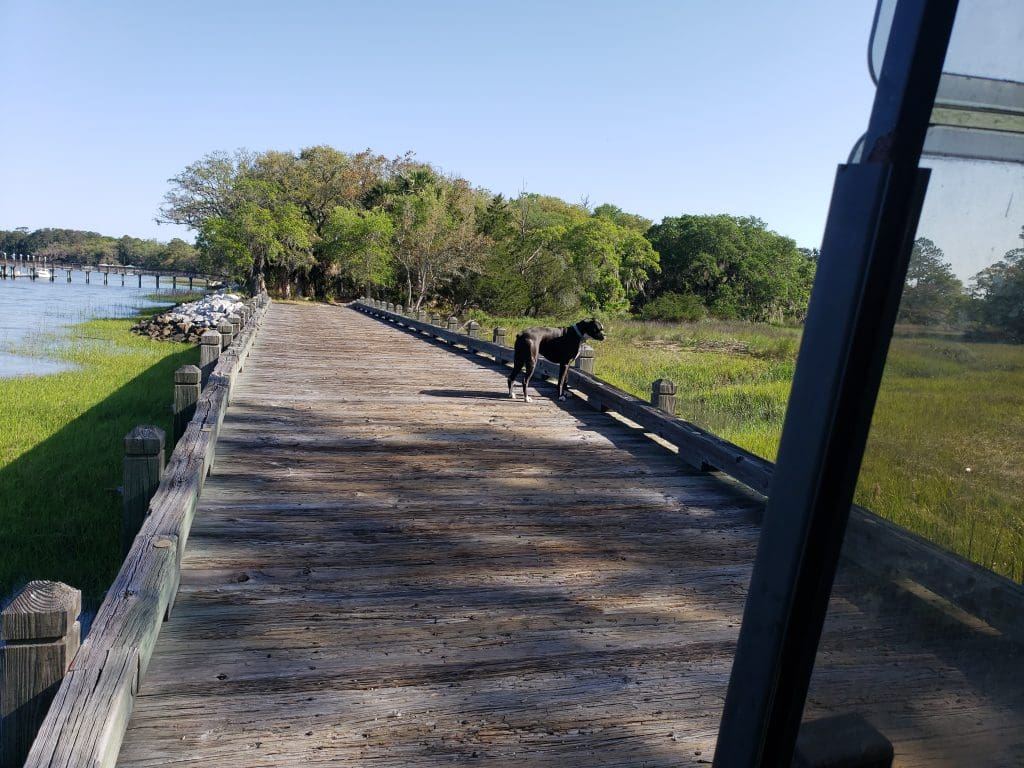
There are cemeteries scattered around the island, all but one abutting the water, because the Gullah believe that flowing water will carry their spirits back to Africa. The Mary Dunn Cemetery on Prospect Road is probably the oldest and best-preserved; but others worth visiting are located on Bloody Point, Cooper River, and Maryfield.

